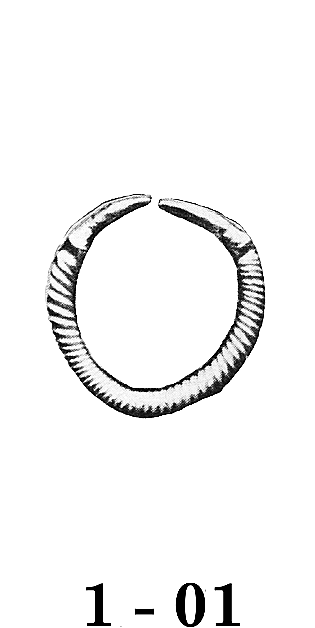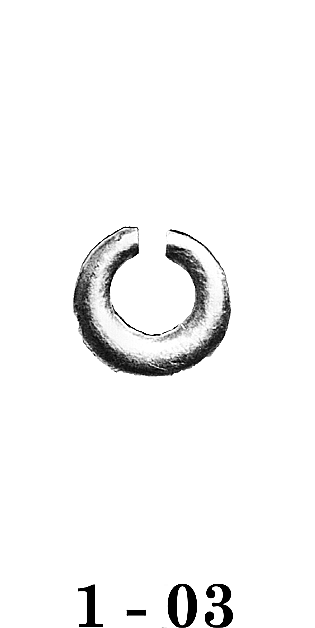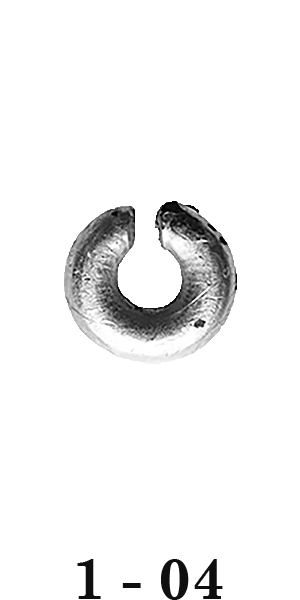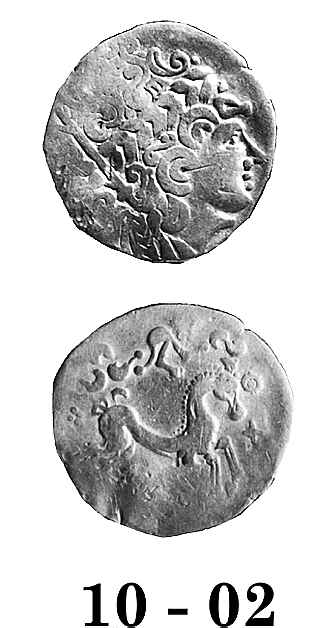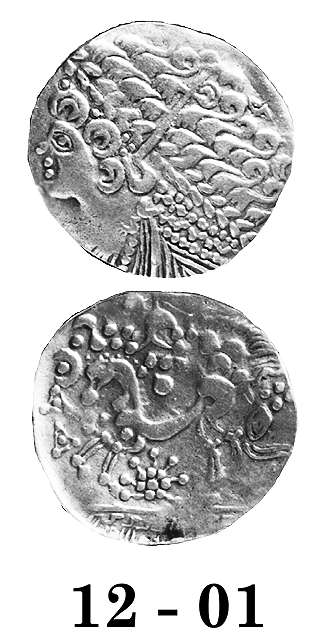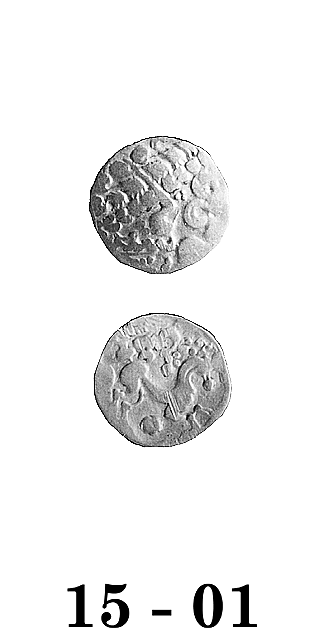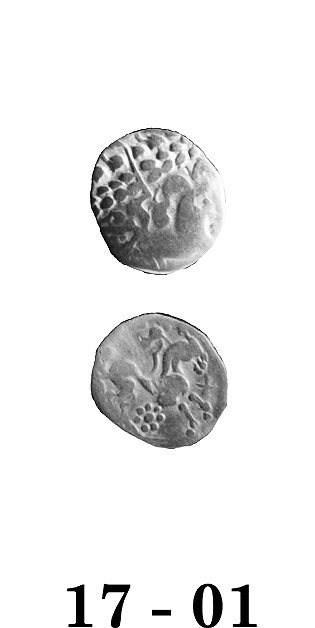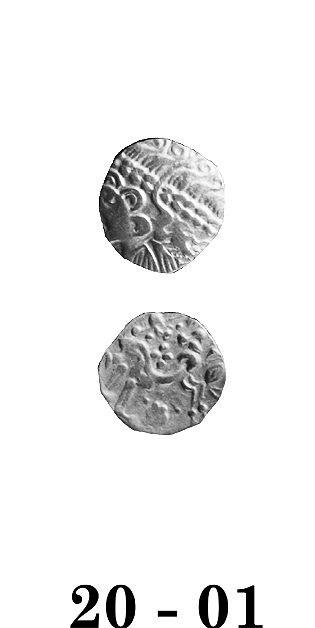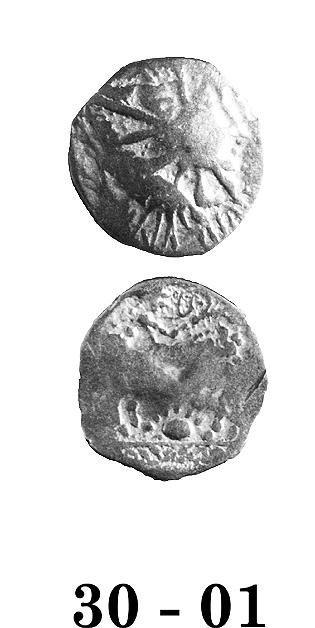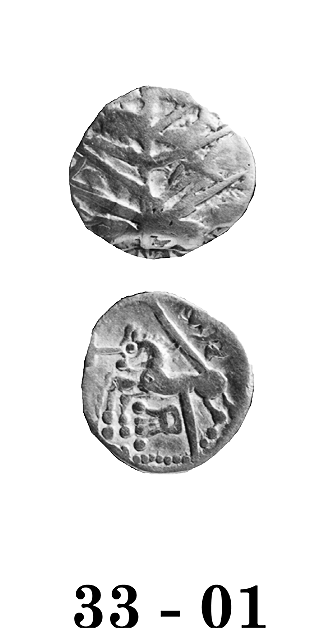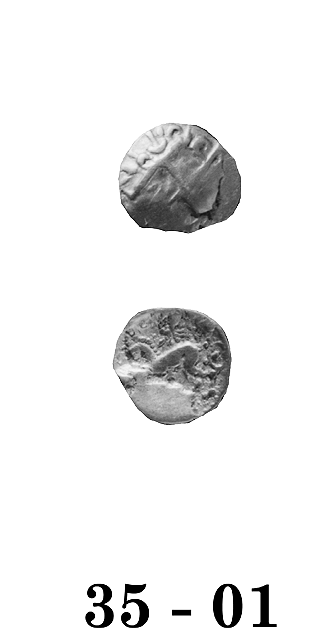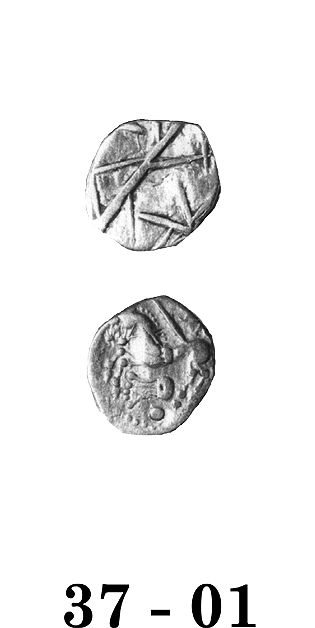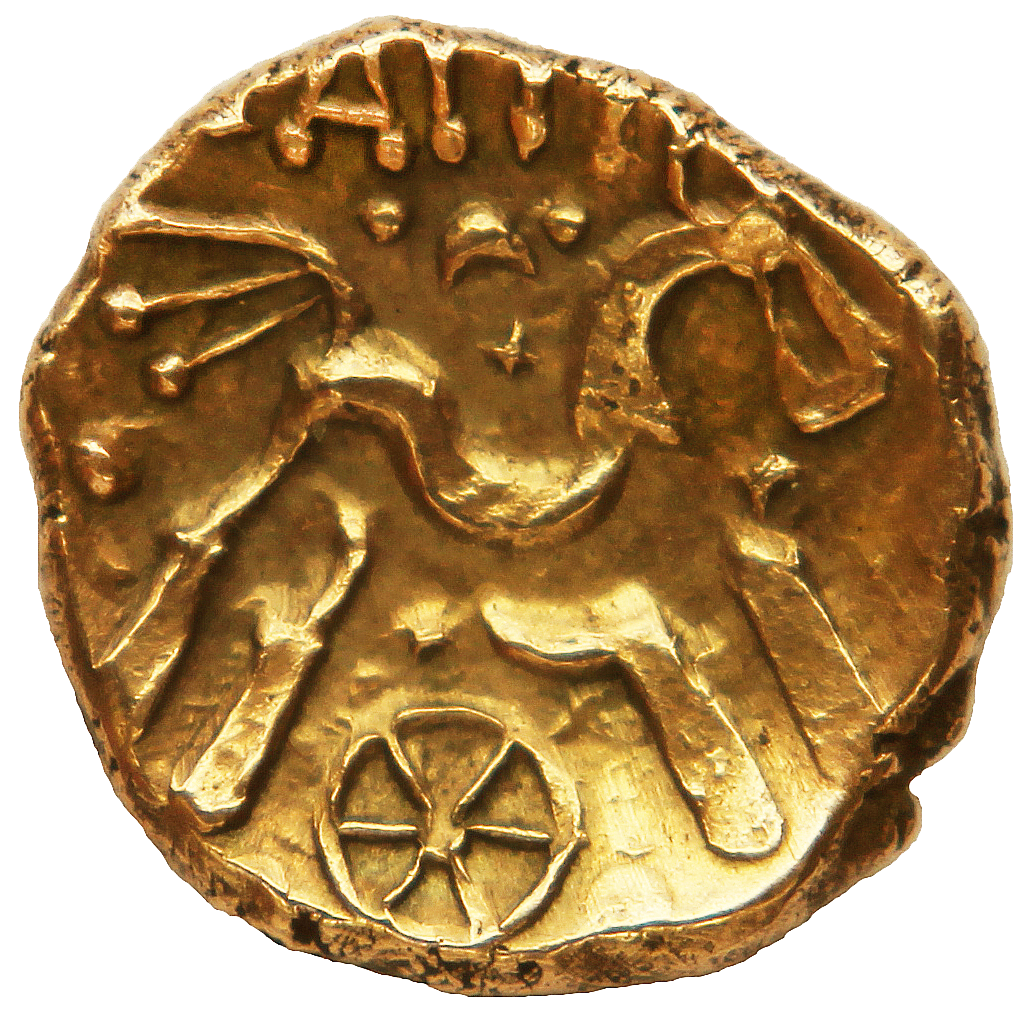
Celtic Coinage of Britain
third edition
Click on coin to see hidden information
Work by Chris Salter and others now identify twelve different kinds of Currency Bars – only the commonest type is illustrated here.
Salter's metallurgical analyses tell us the form of the bar demonstrates the suitability of the metal for different kinds of work. Bars with metal sockets show the metal is good for forming thin sections. Those with folded-over and welded tips demonstrate that the metal is suited to welding by a blacksmith. See: Hedges and Salter 1979, and Crew and Salter 1993 for further information.
Salter's analyses also reveal that impurities in slag inclusions point to the geographical source of the iron ore. Thus we now know the likely sources for the bars and the fact that the bars were made to demonstrate the usefulness of the metal as a raw material.
The idea that the bars were some kind of "money", as asserted in Caesar's Gallic War, is somewhat simplistic. Because they can be identified by sight as suitable ingots for blacksmithing, they likely came to have a predictable value. This predictablilty would have made them useful in commercial exchanges with other objects of known value. Thus, by facilitating exchage and possibly storing wealth, they could serve some of the functions of money. But they should not be seen as official money – they are not "coins" issued by a "ruler".
The catalogue lists the four commonest kinds of bars.
Imported Coinage
Most of the coins imported into Britain were struck by the Ambiani tribe. The first imports began about 125 B.C and coins continued to be imported until the end of the Gallic War.
Gold coins imported into Britain well before the Gallic War.
The reason for defacing the dies is not known
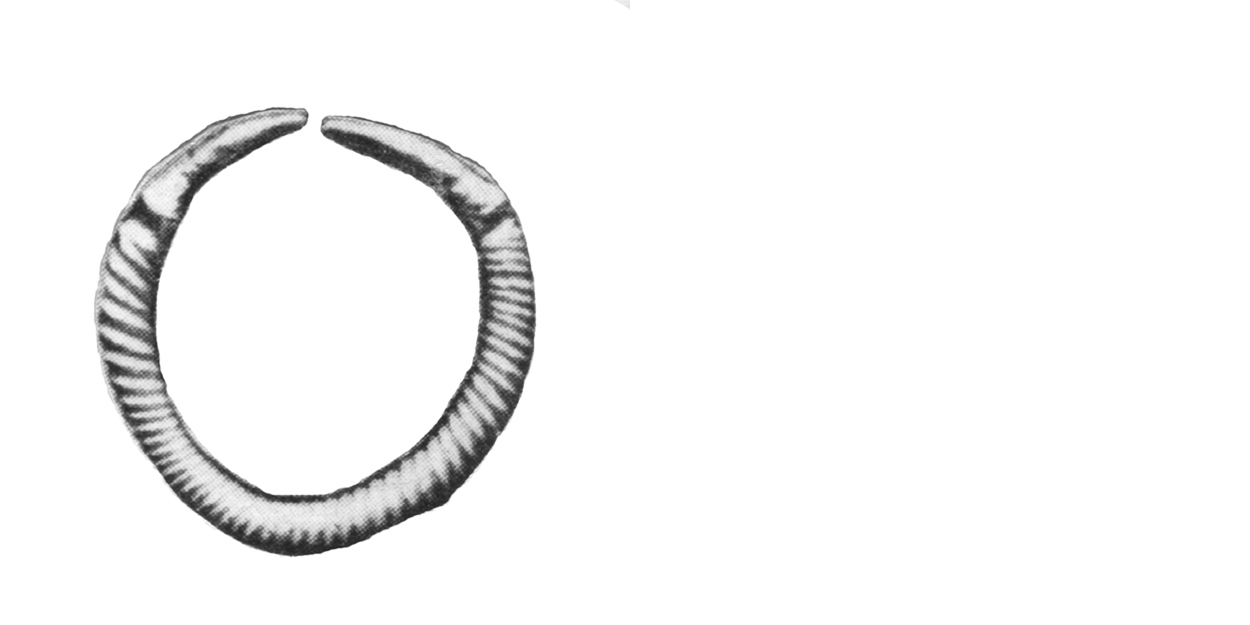
1 - 01 Twisted Wire Type
ca. 1500-1000 B.C. Very Rare
Gold Ring Money ca. 4-15 gms ca. 23 mm
Earliest Record: Uncertain
OBV: Twisted loop of metal
Identifying points:
- plain, pointed ends
- ends do not touch
- ends tapered
REV: Same as obverse
Identifying points:
- same as obverse
CLASSIFICATION: None
NOTES:
- Weights and diameters vary considerably
- Likely used as ornaments
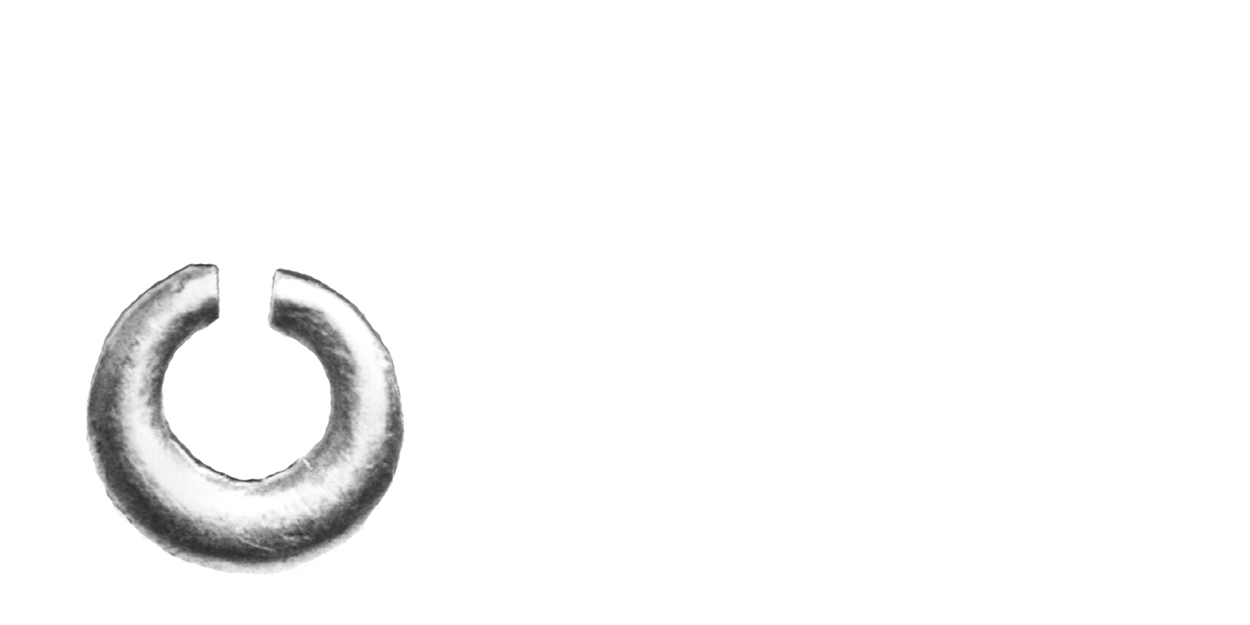
1 - 03 Plain Type
Middle Bronze Age Very Rare
Gold Ring Money ca. 3-12 gms. ca. 13-16 mm
Earliest Record: Uncertain
OBV: Plain band of metal
Identifying points:
- ends usually blunt, do not touch
- often two colours of metal form banded pattern
REV: Same as obverse
Identifying points:
- same as obverse
Classification: None
NOTES:
- Weights and diameters vary considerably
- Primarily used as ornaments, may have functioned as money
- Often occur plated
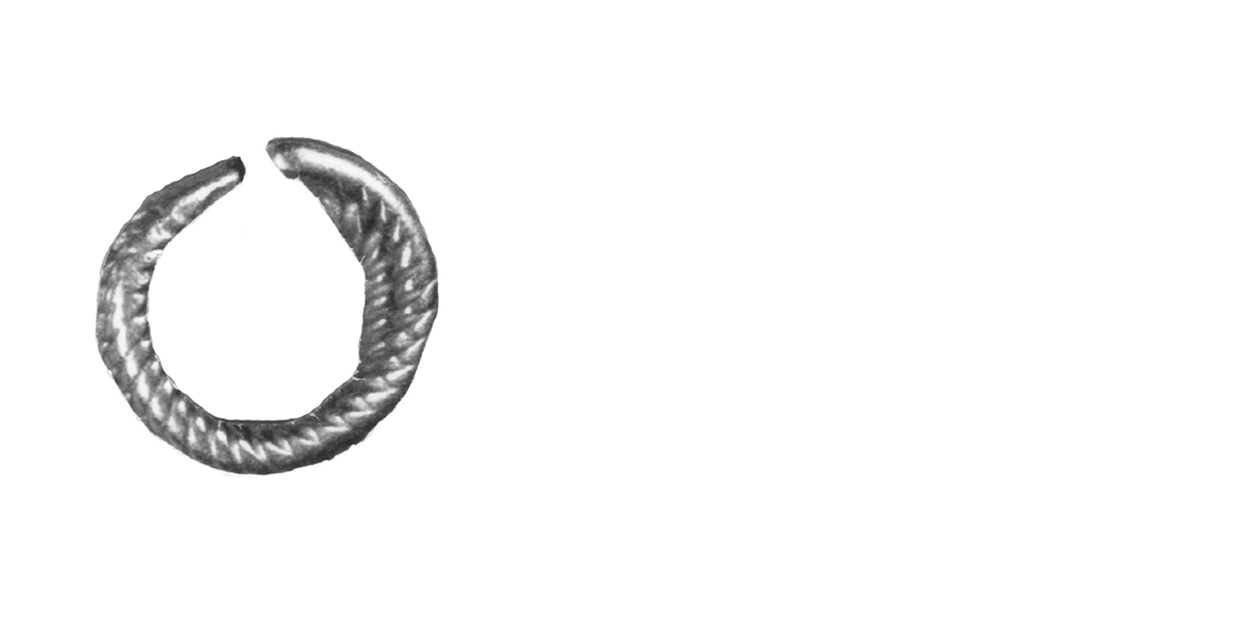
1 - 05 Double-Ring Type
Middle Bronze Age Extremely Rare
Gold Ring Money 4.4 gms. 17 mm
Earliest Record: Van Arsdell, 1989
OBV: Two rings of twisted metal
Identifying points:
- plain, pointed ends
- ends do not touch
- ends tapered
- two rings connected at one end
REV: Same as obverse
Identifying points:
- same as obverse
CLASSIFICATION: None
NOTES:
- Likely used as ornaments

5 - 01 SWORD TYPE
ca. 200-50 B.C. Common
Iron Currency Bar
400-500 gms. 780-890 mm
Earliest Record: Meon Hill, 1824 (see: Allen, 1967b)
OBV: Iron bar, sword shaped
Identifying points:
- flat, narrow blade
- tapered end
- hilt formed around wooden dowel
REV: Same as obverse
Identifying points:
- same as obverse
CLASSIFICATION: None
NOTES:
- Traces of mineralized wood sometimes found in hilt
- Sometimes found cut up as scrap metal awaiting re-use
- Often found in hoards
- Iron requires special conservation treatment
- Most are in museums
- A type exists with the tip folded over and welded
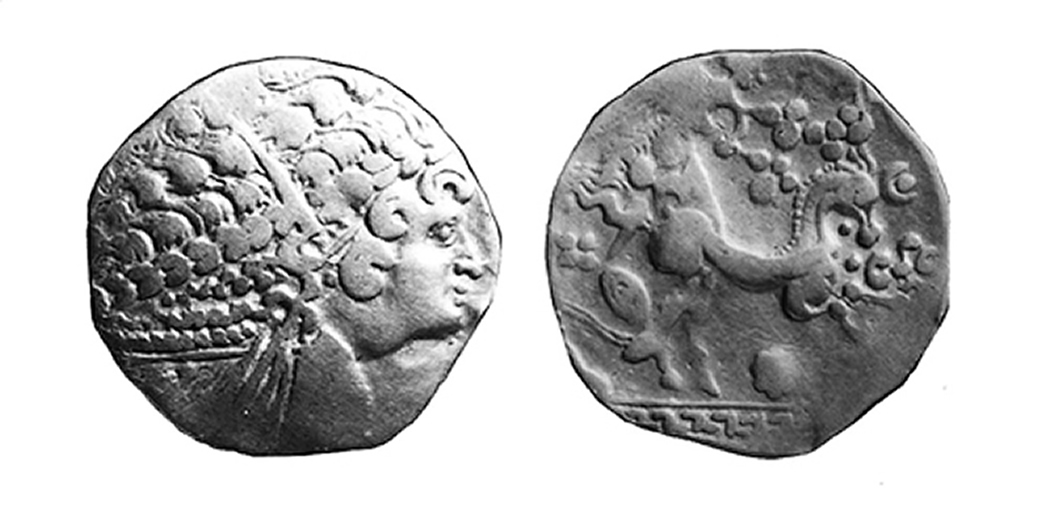
10 - 01 Large Flan Type
125-100 B.C. Common
Gold Stater 7.8 gms. 25 mm
Earliest Record: Petavius, 1610
OBV: Celticized head of Apollo right
Identifying points:
- naturalistic face
REV: Celticized horse right
Identifying points:
- naturalistic charioteer
- "yoke" in front of horse
- "coffee bean" behind horse
CLASSIFICATION: Gallo-Belgic AA1
NOTES:
- Celtic Coin Index records now indicate commoner than previoiusly thought
- Normally occurs in worn condition
- Standard weight given
- Ambianic origin
- Forgery known – (See 10 - 01F)
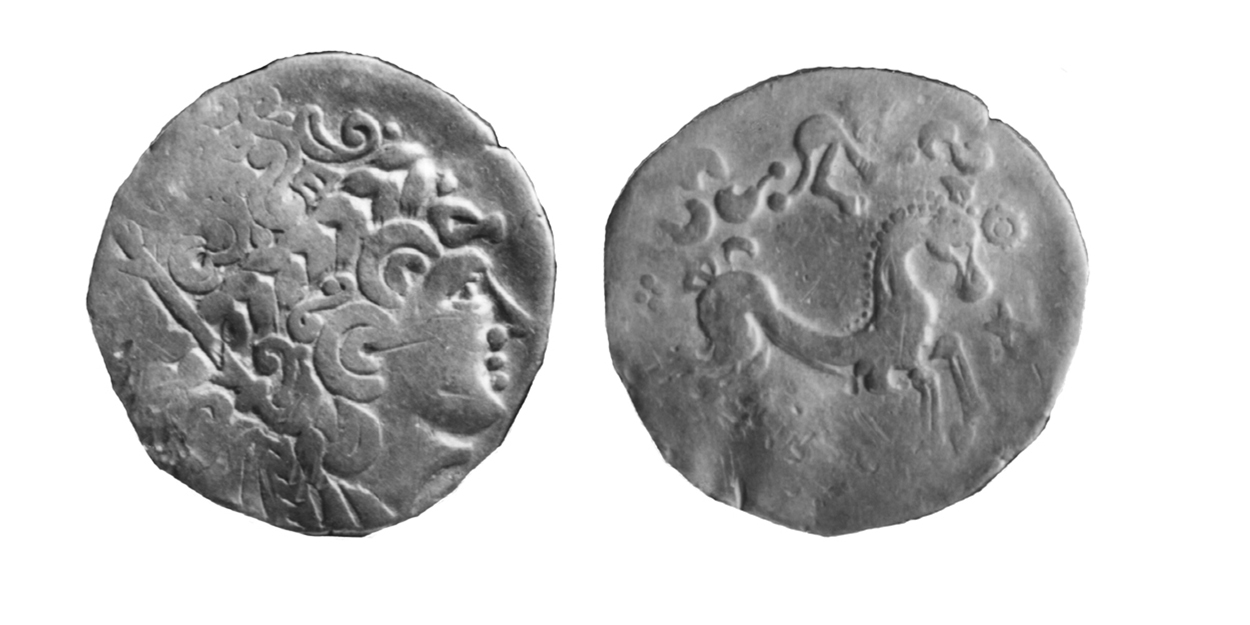
10 - 02 Large Flan Type
125-100 B.C. Common
Gold Stater 7.3-7.8 gms. 22 mm
Earliest Record: Stukeley, 1776b
OBV: Celticized head of Apollo right
Identifying points:
- more prominent wreath than on 10 - 01
- face larger than on 10 - 01
REV: Celticized horse right
Identifying points:
- more open space in field than on 10 - 01
CLASSIFICATION: Gallo-Belgic AC
NOTES:
- Normally occurs in worn condition
- Typical weight given
- Ambianic origin
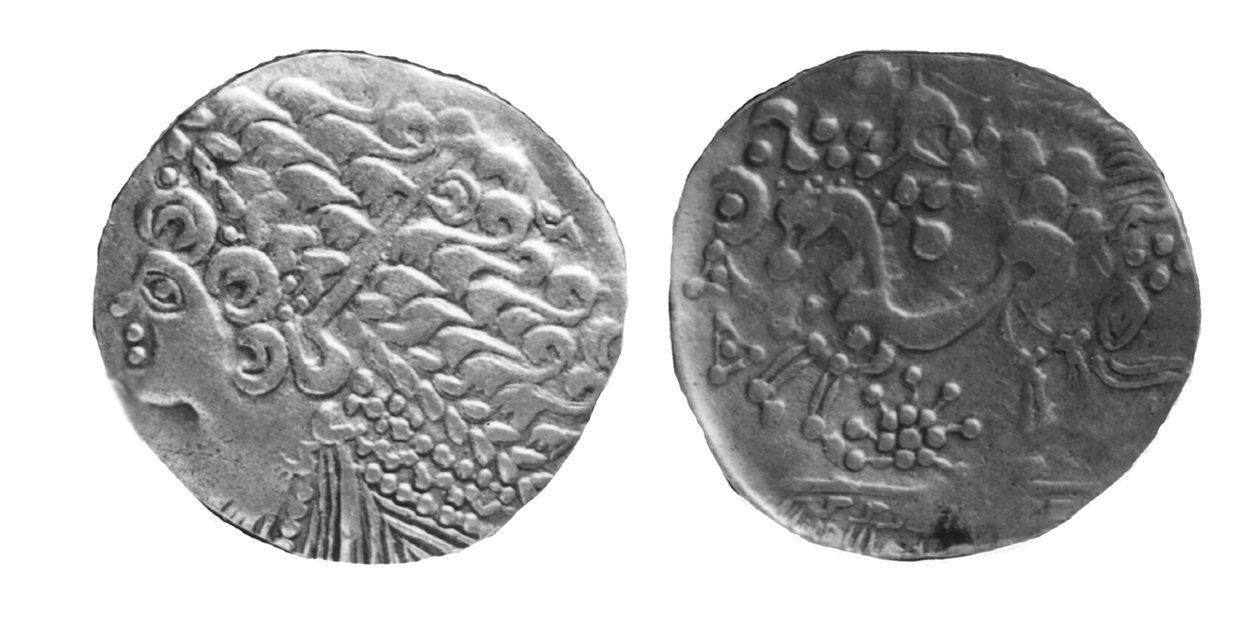
12 - 01 Large Flan Type
125-100 B.C Common
Gold Stater 7.8 gms. 26 mm
Earliest Record: Stukeley, 1776b
OBV: Celticized head of Apollo left
Identifying points:
- naturalistic face
REV: Celticized horse left
Identifying points:
- complex flower below horse
- stylized charioteer above
CLASSIFICATION: Gallo-Belgic AB1
NOTES:
- Normally occurs in worn condition
- Standard weight given
- Ambianic origin
- Some in museums
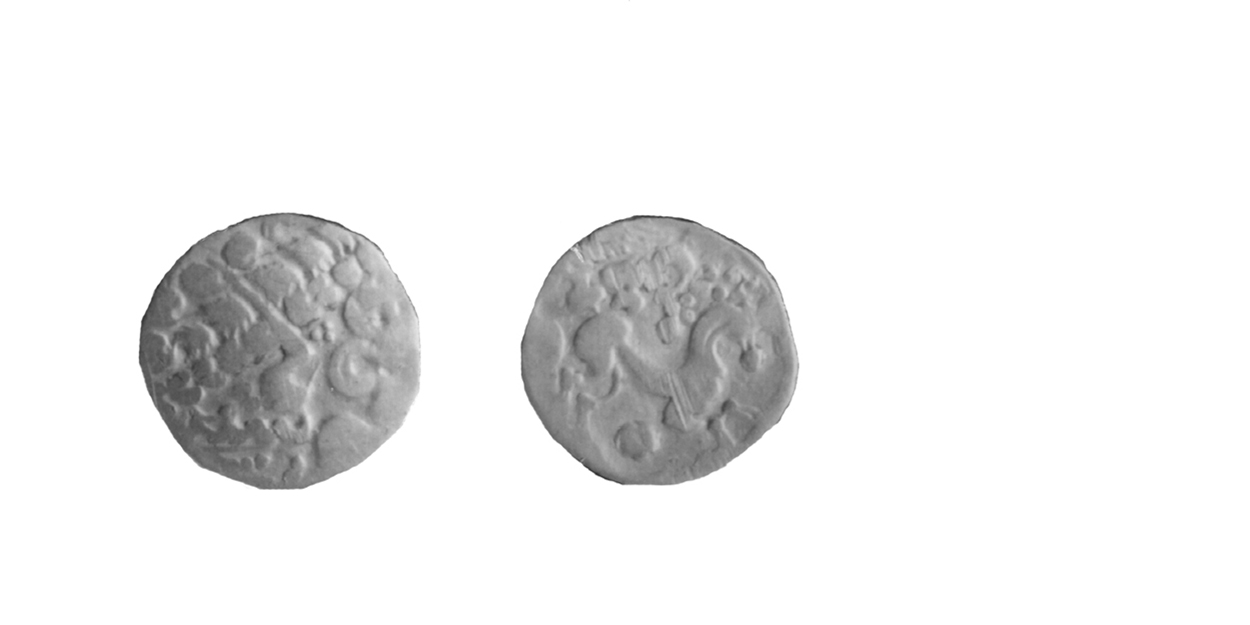
15 - 01 Large Flan Type
125-100 B.C. Common
Gold Quarter Stater 1.4-2.1 gms. 4 mm
Earliest Record: Evans, 1864
OBV: Celticized head of Apollo right
Identifying points
- naturalistic face
REV: Celticized horse right
Identifying points:
- naturalistic charioteer
CLASSIFICATION: Gallo-Belgic AA2
NOTES:
- Normally occurs in worn condition
- Typical weight given
- Ambianic origin
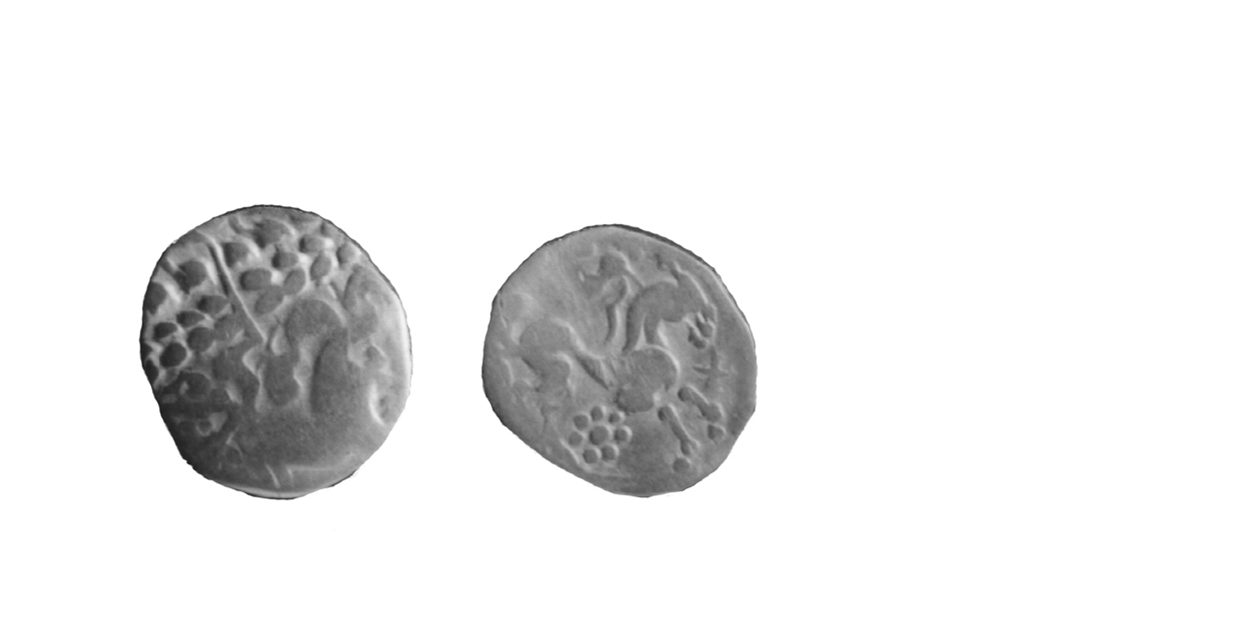
17 - 01 Large Flan Type
125-100 B.C. Very Rare
Gold Quarter Stater 1.7-2.0 gms. 14 mm
Earliest Record: Evans, 1864
OBV: Celticized head of Apollo right
Identifying points:
- more prominent wreath than on 15 - 01
- face larger than on 15 - 01
REV: Celticized horse right
Identifying points:
- more open space in field than on 15 - 01
CLASSIFICATION: Gallo-Belgic A
NOTES:
- Normally occurs in worn condition
- Typical weight given
- Ambianic origin
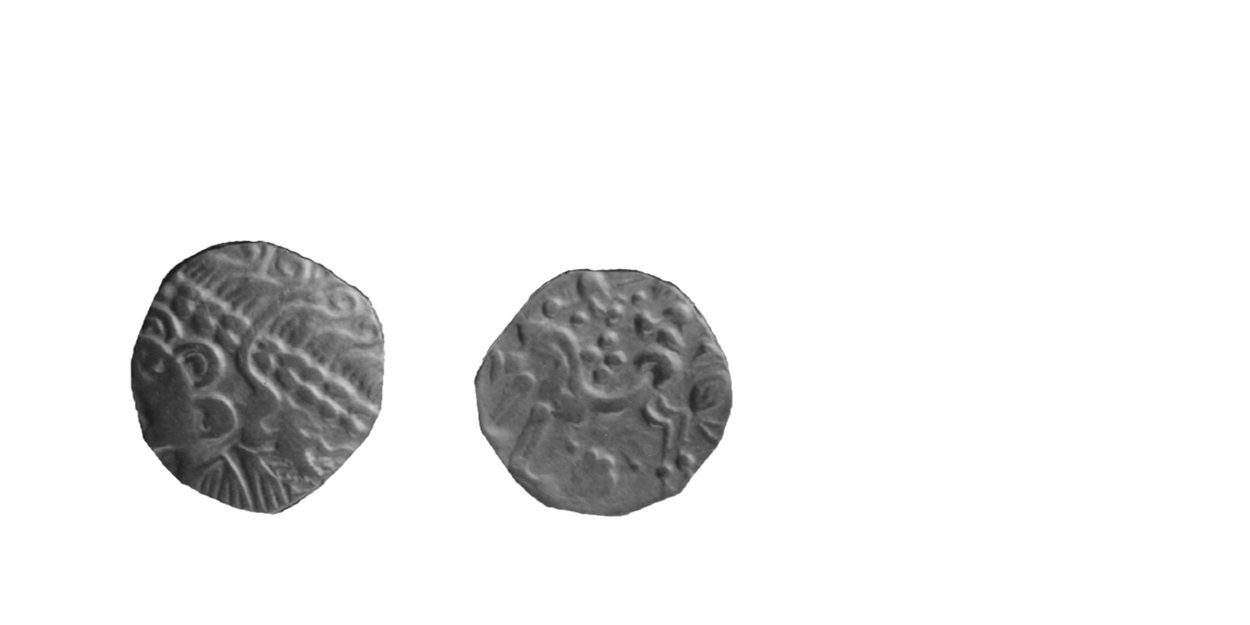
20 - 01 Large Flan Type
125-100 B.C. Common
Gold Quarter Stater 1.4-2.0 gms. 14 mm
Earliest Record: Camden, 1789 (Gough edition)
OBV: Celticized head left
Identifying points:
- naturalistic face
REV: Celticized horse left
Identifying points:
- complex flower below horse
- stylized charioteer above
CLASSIFICATION: Gallo-Belgic AB2
NOTES:
- Normally occurs in worn condition
- Typical weight given
- Ambianic origin
- Many in museums
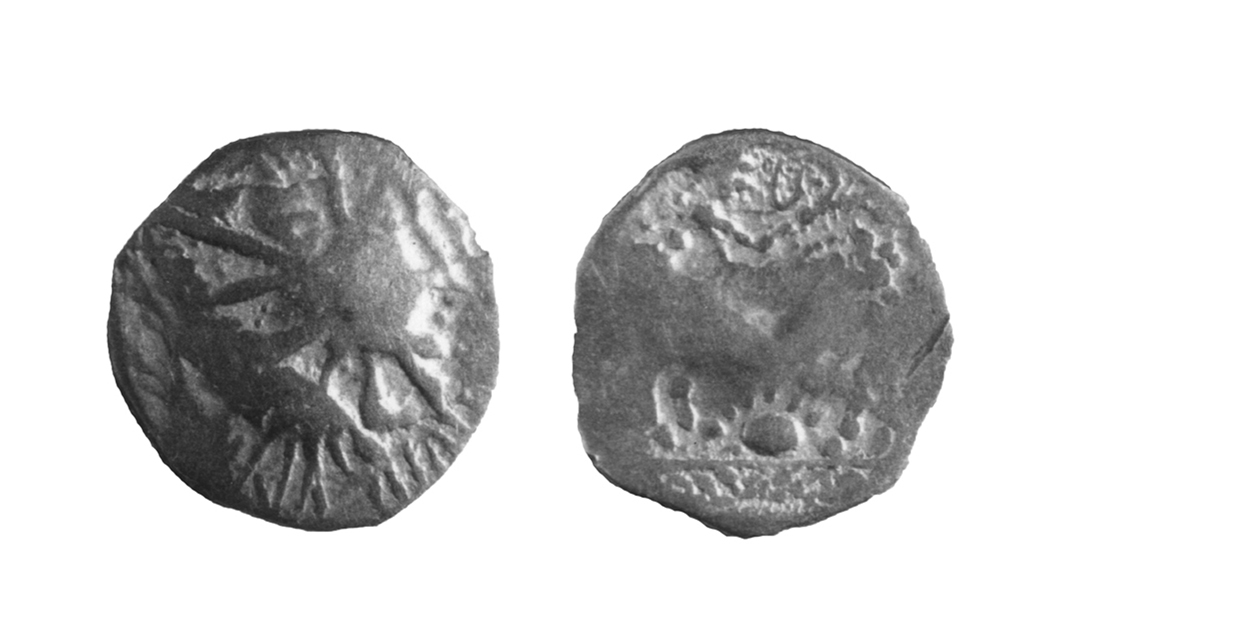
30 - 01 Defaced Die Type
125-100 B.C. Extremely Rare
Gold Stater 7.85 gms.19 mm
Earliest Record: Evans, 1890
OBV: Die defaced with chisel-marks
Identifying points:
- remnant of Apollo head visible beneath marks
REV: Celticized horse right
Identifying points:
- as 10-1
CLASSIFICATION: Gallo-Belgic BA1
NOTES:
- Standard weight given
- This type has been attributed to the Caletes but the original dies appear to be Ambianic in origin.
- Many in museums

33 - 01 Defaced Die Type
125-100 B.C. Rare
Gold Stater 7.85 gms. 17 mm
Earliest Record: Evans, 1890
OBV: Die defaced with chisel-marks
Identifying points:
- no remnants of Apollo head visible beneath marks
REV: Celticized horse left
Identifying points:
- "lyre" below horse
CLASSIFICATION: Gallo-Belgic BB1
NOTES:
- Standard weight given
- Attributed to the Caletes
- Most in museums
- Modern forgery exists – (see 33 - 01F)
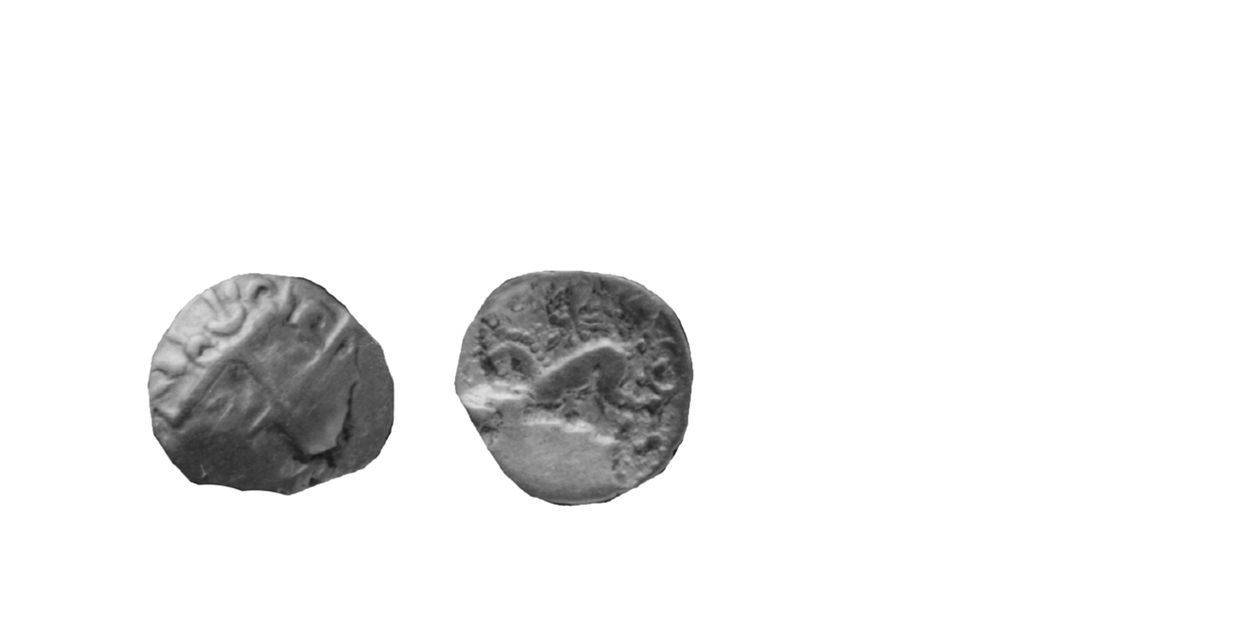
35 - 01 Defaced Die Type
125-100 B.C. Very Rare
Gold Quarter Stater 1.8-2.0 gms. 12 mm
Earliest Record: Camden, 1789 (Gough edition)
OBV: Die defaced with chisel-marks
Identifying points:
- remnant of Apollo head visible below marks
REV: Celticized horse left
Identifying points:
- complex flower below horse
- stylized cahrioteer above
NOTES:
- Typical weight given
- Attributed to the Caletes

37 - 01 Defaced Die Type
125-100 B.C. Common
Gold Quarter Stater 1.4-1.9 gms. 12 mm
Earliest Record: Petavius, 1610
OBV: Die defaced with chisel-marks
Identifying points:
- no remnants of Apollo head visible beneath marks
REV: Two Celticized horses left
Identifying points:
- "lyre" below horses
- "Rider" on horses
CLASSIFICATION: Gallo-Belgic BB2
NOTES:
- Typical weight given
- Attributed to the Caletes
- Some in museums
5 - 03 Spit Type
ca. 200-50 B.C. Extremely Rare
Iron Currency Bar
Earliest Record: Allen, 1967b
OBV: Similar to Sword Type
Identifying points:
- thinner blade
- shorter hilt
REV: Same as obverse
Identifying points:
- same as obverse
CLASSIFICATION: None
NOTES:
- Not usually found hoarded
- Iron requires special conservation treatment
- Most are in museums
5 - 05 Ploughshare Type
ca. 200-50 B.C. Extremely Rare
Iron Currency Bar
Earliest Record: Allen, 1967b
OBV: Similar to Sword Type
Identifying points:
- thicker blade
- heavier blade
REV: Same as obverse
Identifying points:
- same as obverse
CLASSIFICATION: None
NOTES:
- Not usually found hoarded
- Iron requires special conservation treatment
- Often found along the Thames, and were possibly votive offerings
- Most are in museums
5 - 07 Bay-Leaf Type
ca. 200-50 B.C. Extremely Rare
Iron Currency Bar
Earliest Record: Allen, 1967b
OBV: Similar to Sword Type
Identifying points:
- long hilt
- hilt has semi-circular section
REV: Similar to Sword type
Identifying points:
- same as obverse
CLASSIFICATION: None
NOTES:
- Not usually found hoarded
- Iron requires special conservation treatment
- Most are in museums
Traditionally, the earliest forms of money thought to have been used in Britain were small rings of gold and iron bars shaped like swords.
We now know the rings date from the Middle Bronze Age, ca. 1500 - 1000 B.C. At such an early time they would have functioned as jewelry or hair ornaments. Their only possible monetary function might have been as a means of storing wealth.
Caesar mentions the iron bars in his writings, placing them as late as 55 B.C. There is no agreement about the way they could have functioned as money.
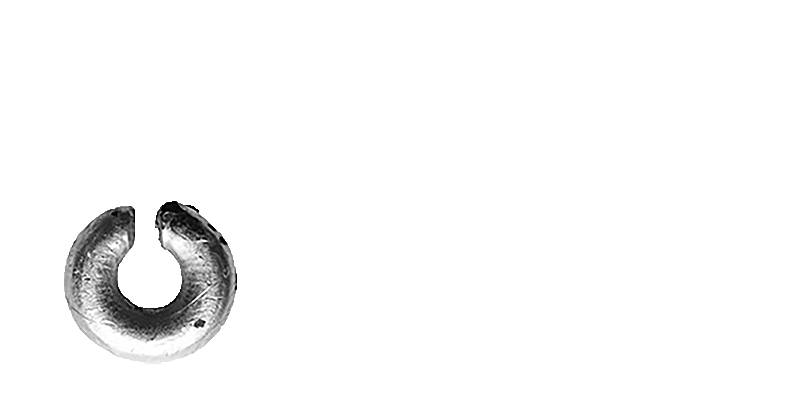
1 - 04 Plain Type
Middle Bronze Age Very Rare
Gold/Bronze Plated Ring Money ca. 5.24 gms. ca. 15 mm
Earliest Record: Uncertain
OBV: Plain band of metal
Identifying points:
- ends usually blunt, do not touch
- often two colours of metal form banded pattern
REV: Same as obverse
Identifying points:
- same as obverse
Classification: None
NOTES:
- Bronze core wrapped in gold foil
- Weights and diameters vary considerably
- Weight and diameter of illustrated example given
- Primarily used as ornaments, may have functioned as money

